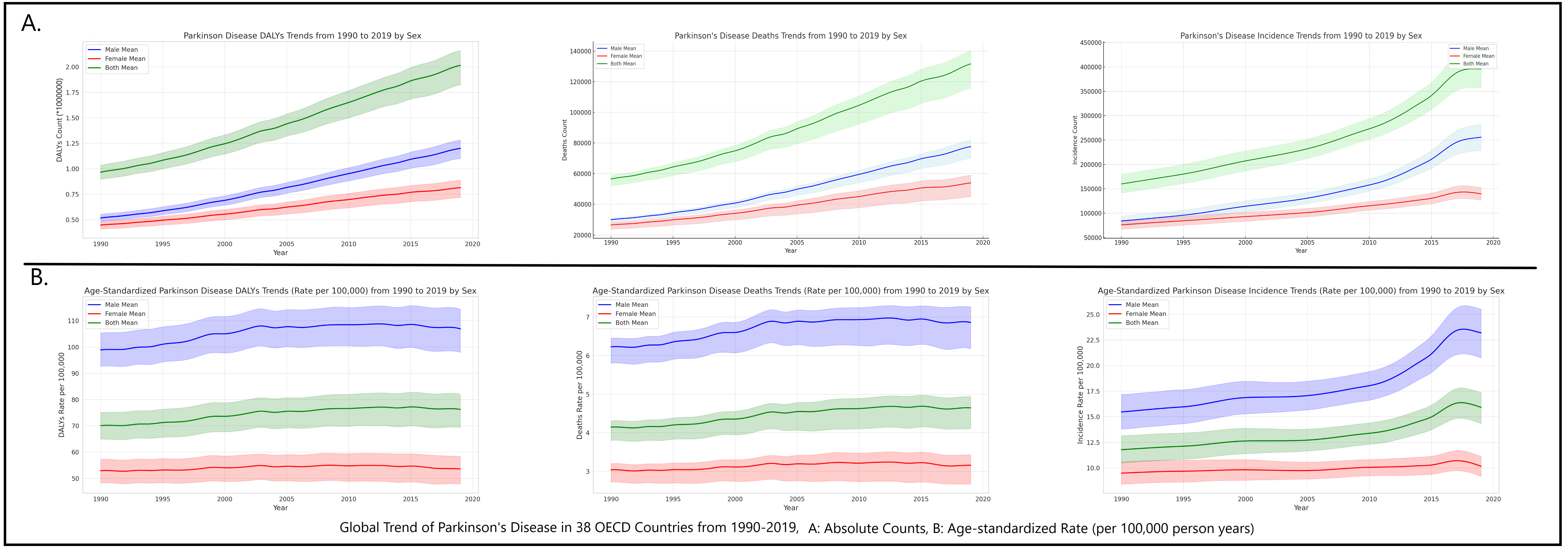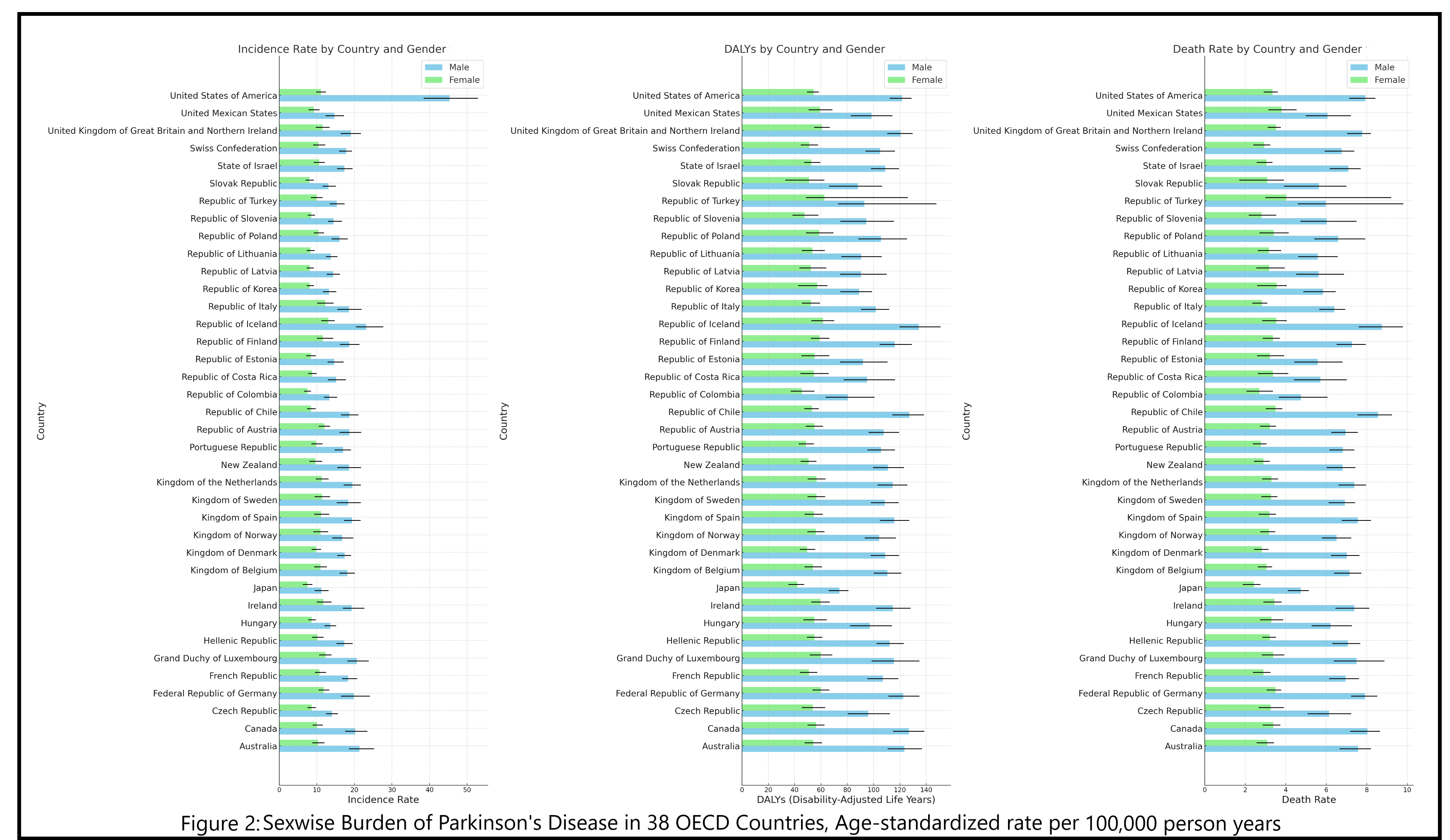Category: Epidemiology
Objective: The focus of this study was to assess the burden of PD in the organization for economic cooperation and development (OECD) region from 1990-2019.
Background: Parkinson’s disease (PD) is, a profound neurodegenerative ailment, has been increasingly recognized worldwide due to its growing occurrence and its significant implications on individual health and healthcare systems.
Method: Leveraging the Global Burden of Disease tool, we evaluated the prevalence, incidence, mortality, and disability-adjusted life years (DALYs) of PD by age, gender, and year throughout the 38 OECD between 1990-2019. Results were presented both as absolute counts and age-standardized rates (per 100,000).
Results: The overall PD prevalence rose dramatically from 1.3 million (95%UI:1.1-1.5) in 1990 to 2.7 million (2.4-3) in 2019. Similarly, fatalities grew from 56,510 (52,080-58,657) in 1990 to 131,589 (115,716-140,334) in 2019, and DALYs surged from 966,486 (896,196-1,035,722) in 1990 to 2,014,159 (1,824,390-2,160,382) in 2019. Noteworthy national variations emerged; the republic of Korea (RK) witnessed a 347% spike in annual percentage of change (APC) in incidence, whereas United States (US) experienced a 307% rise from 1990-2019. Highest APC in Deaths observed in RK by 435%. The US bore the most considerable PD burden in 2019. USA reported the highest age-standardized incidence rate (ASIR) at 26.44 cases per 100,000, while Iceland noted the highest mortality rate at 5.79 per 100,000 in 2019. Astonishingly, the 95+ age demographic showcased an incidence surge by 397% from 1990-2019, with the 75-79 age bracket having the highest incidence (84,739) and the 80-84 group recording the most deaths (34,137) in 2019. Gender disparities were evident, with females bearing a more significant PD burden: incidence rates for males vs. females were 205% vs. 83%, deaths were 159% vs. 104%, and DALYs were 131% vs. 82% from 1990-2019.
Conclusion: In 2019, PD was identified as the 19th most common cause of death among all causes in OECD countries. Over the past three decades, the OECD region has experienced a pronounced escalation in the burden of PD. Remarkably, males bore a disproportionately greater brunt than females, and older age groups faced heightened vulnerability. This expanding burden underscores the pressing need for region-specific strategies and interventions to manage and mitigate the impacts of PD in the OECD context.
Global Trend of PD
Sexwise Distribution of PD
To cite this abstract in AMA style:
H. Desai, H. Chhayani, N. Brahmbhatt, J. Jobby, B. Desai, M. Lakkimsetti, P. Vemparala. Global Trend of Parkinson’s Disease in 38 OECD Countries from 1990-2019: An Insight from the GBD 2019. [abstract]. Mov Disord. 2024; 39 (suppl 1). https://www.mdsabstracts.org/abstract/global-trend-of-parkinsons-disease-in-38-oecd-countries-from-1990-2019-an-insight-from-the-gbd-2019/. Accessed December 27, 2025.« Back to 2024 International Congress
MDS Abstracts - https://www.mdsabstracts.org/abstract/global-trend-of-parkinsons-disease-in-38-oecd-countries-from-1990-2019-an-insight-from-the-gbd-2019/


